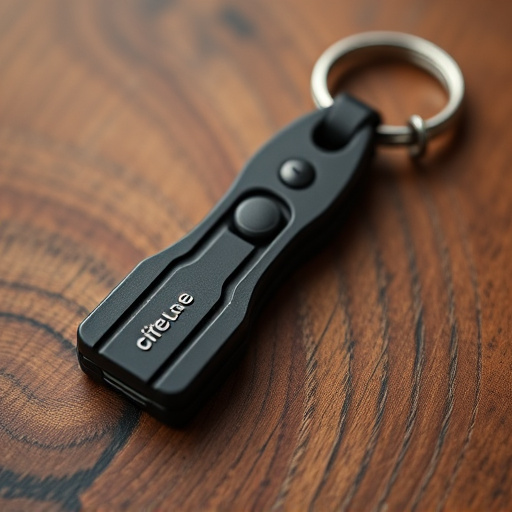Permitted Self-Defense Keychain Tools: Legal definitions vary globally, dictating regional restrictions on keychain safety devices. These tools are classified as self-defense devices if they have specific features and meet size/weight criteria, but local laws differ widely. Compliance is crucial to avoid legal repercussions; users should stay informed about regulations, while manufacturers must test products, obtain certifications, and provide clear instructions for safe use.
“Unraveling the legal landscape of keychain safety devices is crucial for both manufacturers and users. This comprehensive guide explores the definition, permitted uses, and regional variations of these self-defense tools. From understanding what constitutes a keychain safety device to navigating state-specific regulations, we delve into essential aspects. Learn about the legal implications for carrying Permitted Self-Defense Keychain Tools and ensure compliance with our practical tips for manufacturers and users alike.”
- Understanding Legal Definitions: What Constitutes a Keychain Safety Device?
- Permitted Uses: Self-Defense and Law Enforcement Regulations
- Regional Variations: Country/State-Specific Legal Requirements
- Ensuring Compliance: Tips for Manufacturers and Users
Understanding Legal Definitions: What Constitutes a Keychain Safety Device?
Understanding Legal Definitions is key when discussing Keychain Safety Devices. The term ‘keychain safety device’ isn’t universally defined, so it’s crucial to know what your region considers such a tool. In many jurisdictions, Permitted Self Defense Keychain Tools are defined as devices designed for personal protection, carrying specific features like sharp points or edges, and meeting certain size and weight criteria. These tools are often permitted under laws governing self-defense rights and open carry of defensive weapons.
The legal classification of these devices varies across countries and even states within the same country. Some may be treated as regular accessories, while others fall into restricted categories due to their potential for misuse. Staying informed about local legislation is essential to ensure compliance and avoid any legal repercussions.
Permitted Uses: Self-Defense and Law Enforcement Regulations
In many jurisdictions, the legal status of keychain safety devices is governed by their intended use, with a strong focus on self-defense and law enforcement applications. Permitted uses for these tools are generally limited to personal security and emergency situations. Self-defense is a primary consideration; these keychains are designed to provide individuals with an additional layer of protection in potentially dangerous scenarios.
Law enforcement regulations also play a significant role, as specialized keychain tools can be useful for officers in high-risk situations. However, the use of such devices by civilians is subject to strict rules, ensuring they are only employed as a last resort and in cases where personal safety is at risk. The legal framework aims to balance individual rights with public safety, outlining clear guidelines on when Permitted Self-Defense Keychain Tools can be legally carried and used.
Regional Variations: Country/State-Specific Legal Requirements
When it comes to keychain safety devices, especially those designed for self-defense, regional variations in legal requirements can significantly impact what is permitted. Each country and state has its own set of laws governing the use and carriage of self-defense tools, including keychains. For instance, some regions may allow certain types of pepper spray or stun guns as self-defense keychain items, while others might restrict their use to law enforcement only. Understanding these local regulations is crucial for individuals considering carrying self-defense tools as a means of personal safety.
The legal landscape surrounding permitted self-defense keychain tools varies widely across different areas. Some states or provinces may have lenient laws, allowing a wide range of non-lethal self-defense devices, including tasers, flashlights with stun features, and even high-decibel alarms. In contrast, other jurisdictions might restrict or ban certain items altogether, requiring individuals to exercise caution when choosing their self-defense keychain accessories. Staying informed about local laws is essential to ensure compliance and avoid any potential legal issues.
Ensuring Compliance: Tips for Manufacturers and Users
Ensuring compliance with legal requirements is paramount for manufacturers and users of permitted self-defense keychain tools. Key considerations include understanding regional regulations governing self-defense devices, such as restrictions on force levels and specific mechanics allowed. Staying informed about these laws is crucial to avoid legal repercussions and ensure the safety of both the user and potential targets.
For manufacturers, this involves thorough product testing and certification to meet industry standards. Offering clear and comprehensive instructions for safe use can also mitigate liability. Users, on their part, should familiarize themselves with local laws and exercise responsible ownership by storing such tools in a secure manner, away from unauthorized access, and using them only as a last resort when facing imminent threat.
In conclusion, understanding the legal landscape surrounding keychain safety devices is paramount for manufacturers and users alike. By familiarizing themselves with definitions, permitted uses, and regional variations, they can ensure compliance with relevant regulations. When used responsibly, Permitted Self-Defense Keychain Tools can offer enhanced security without compromising the law. Always stay informed to leverage these devices safely and within legal boundaries.
